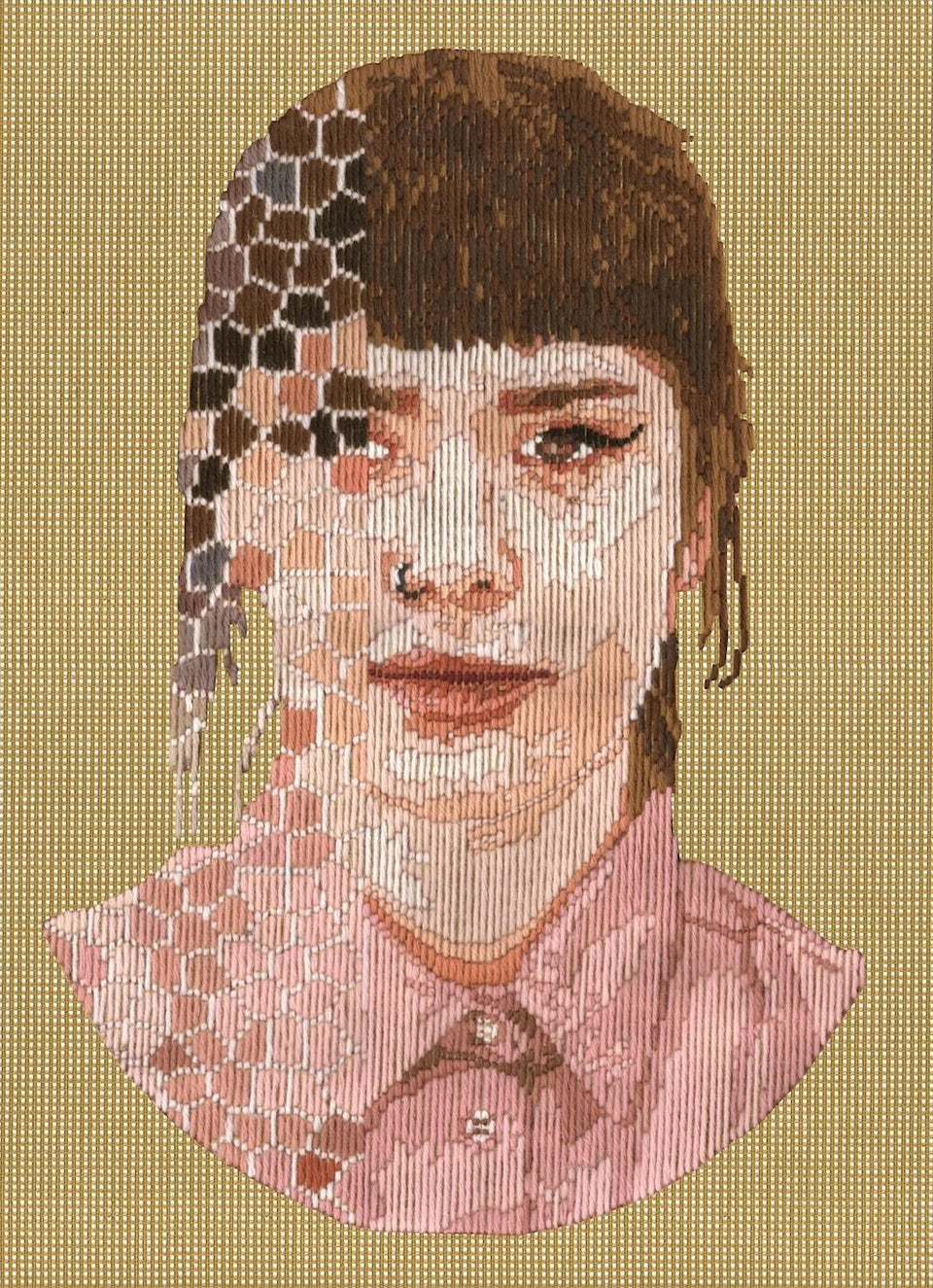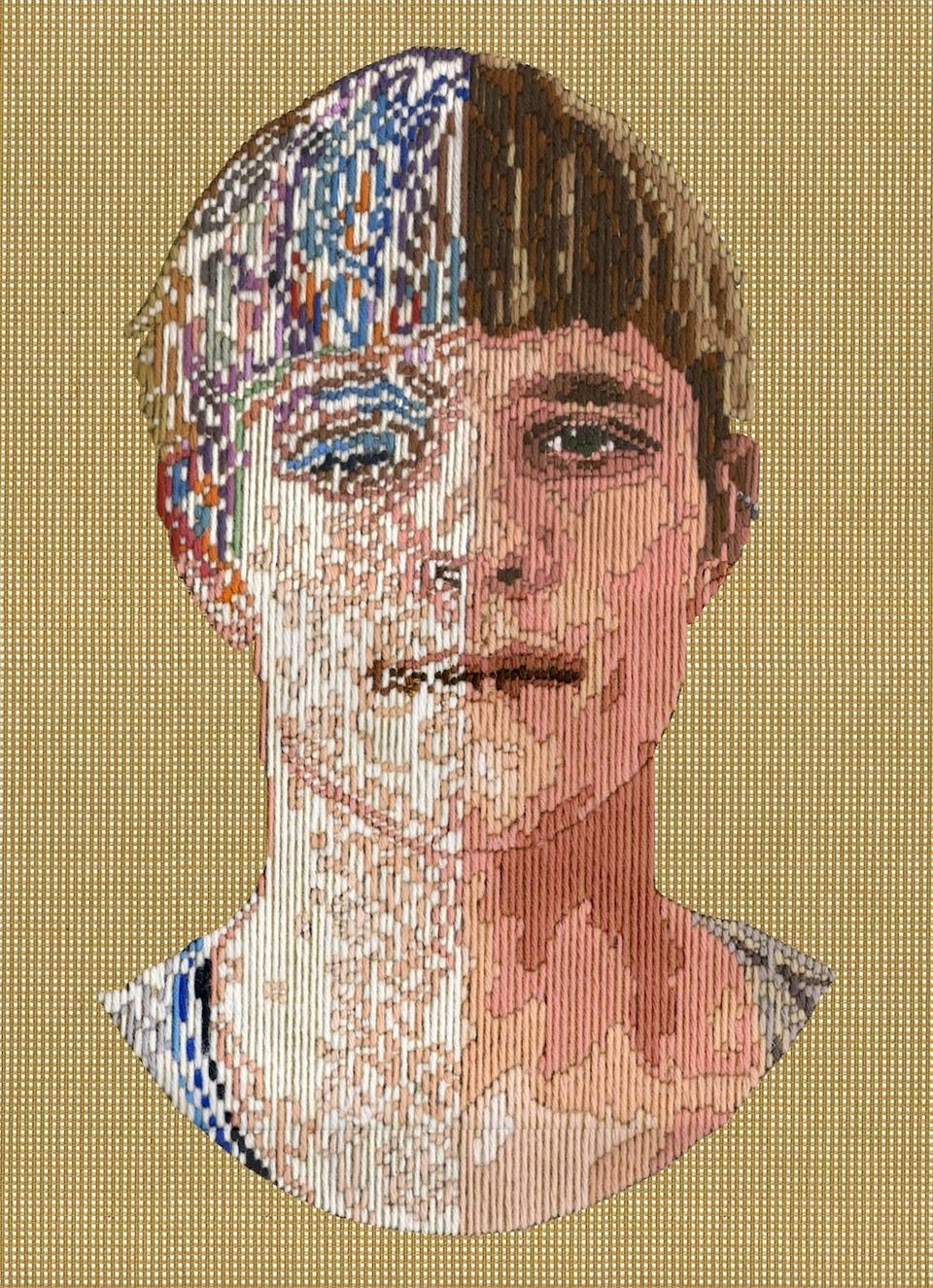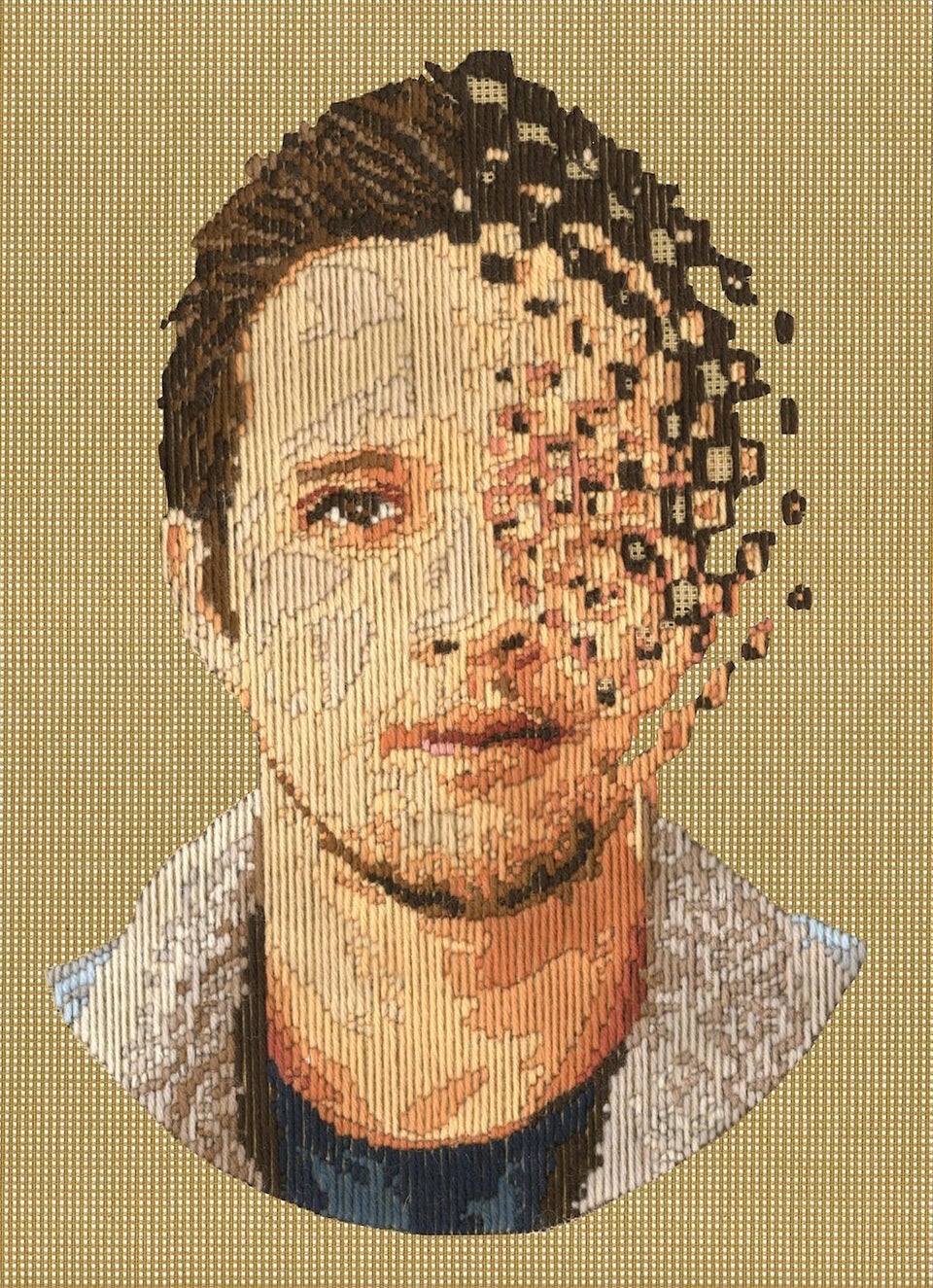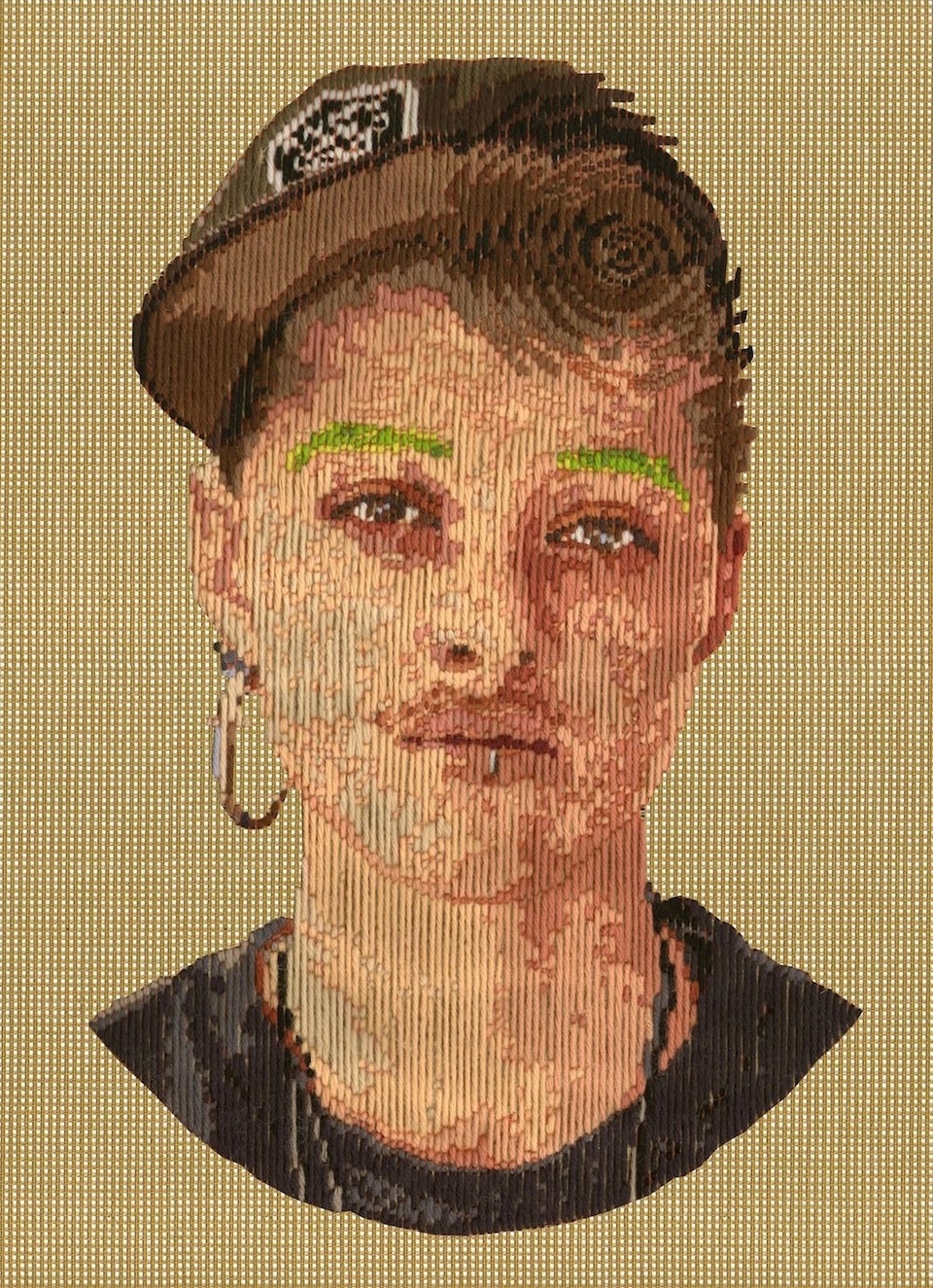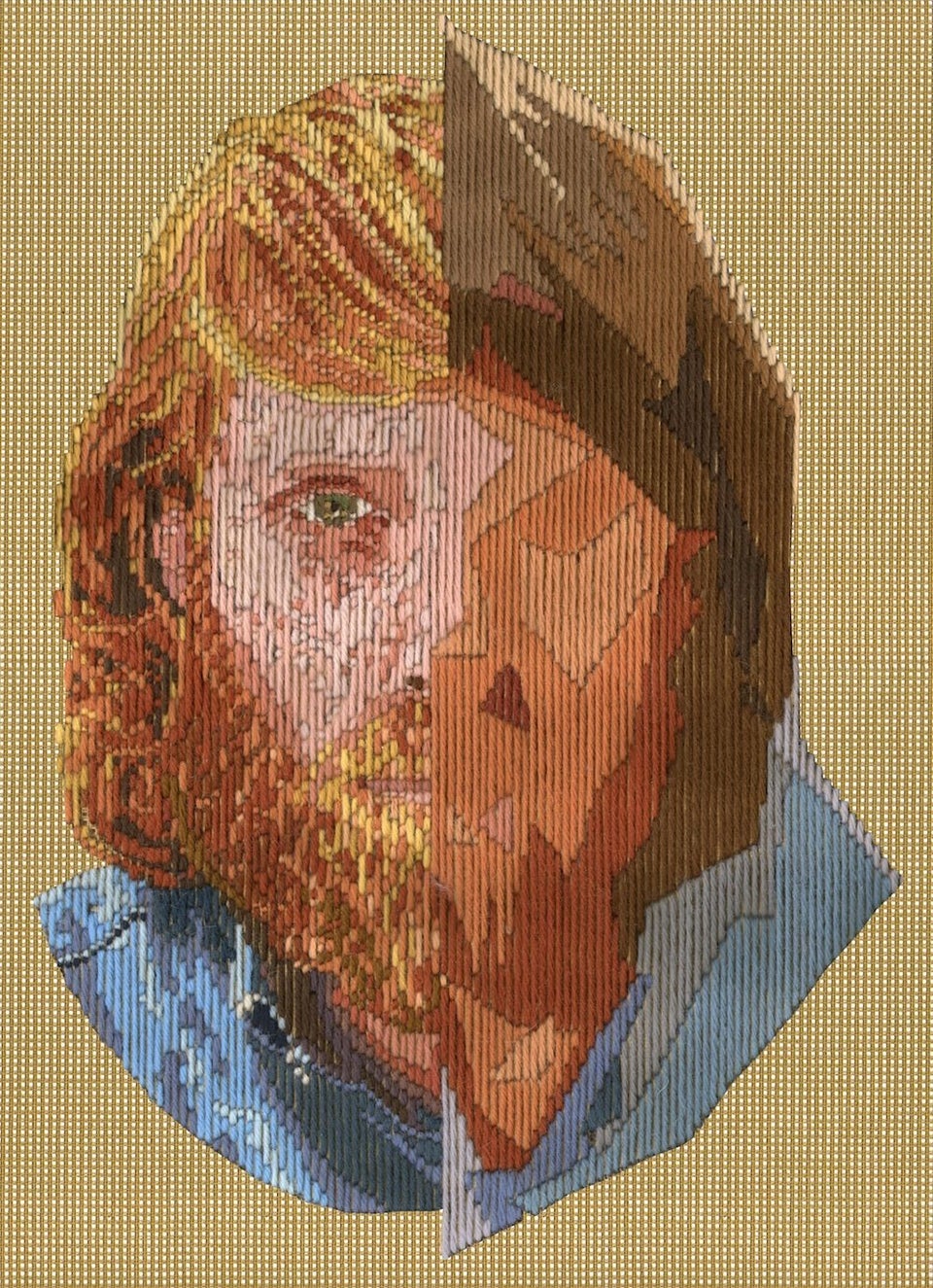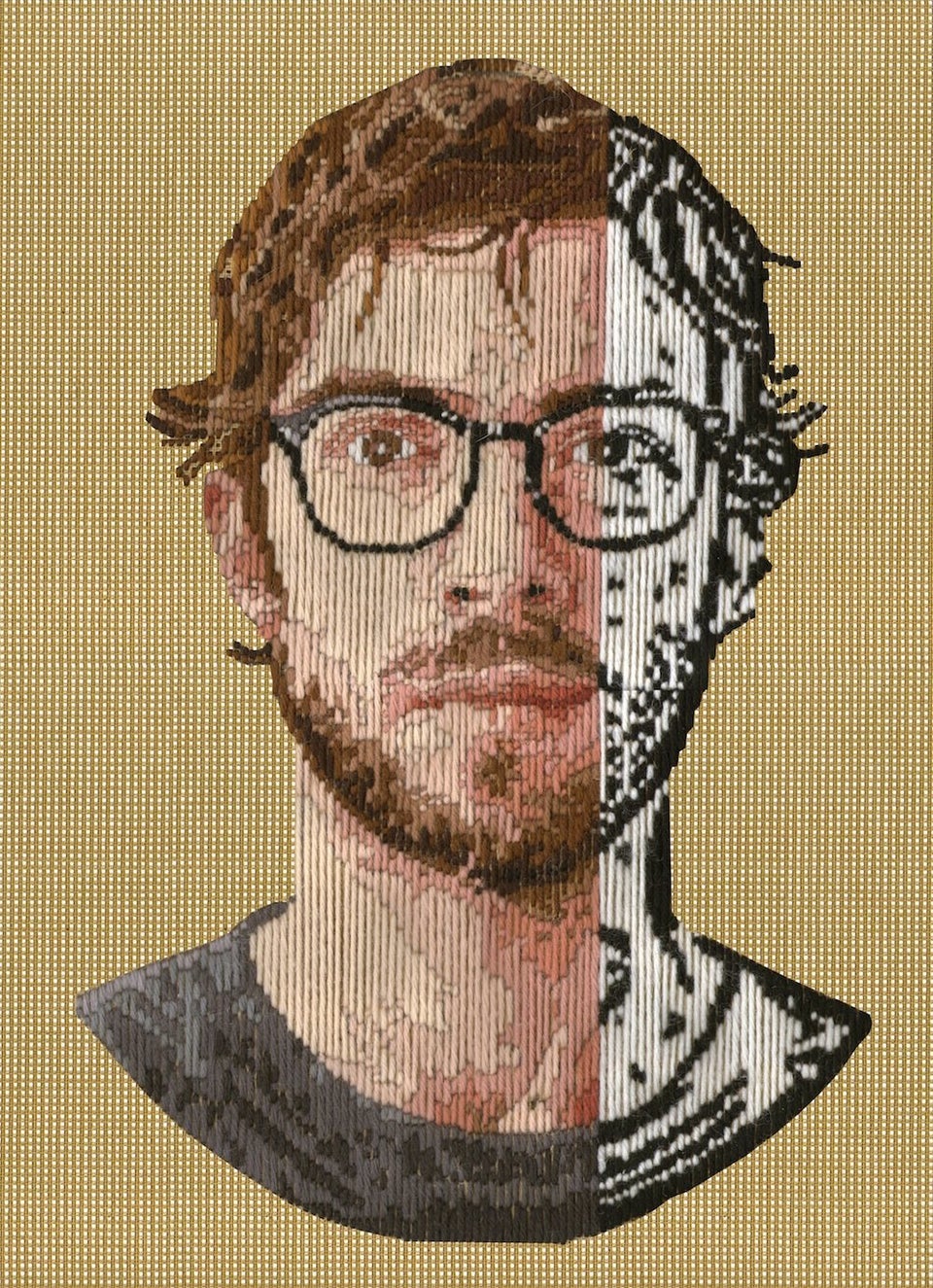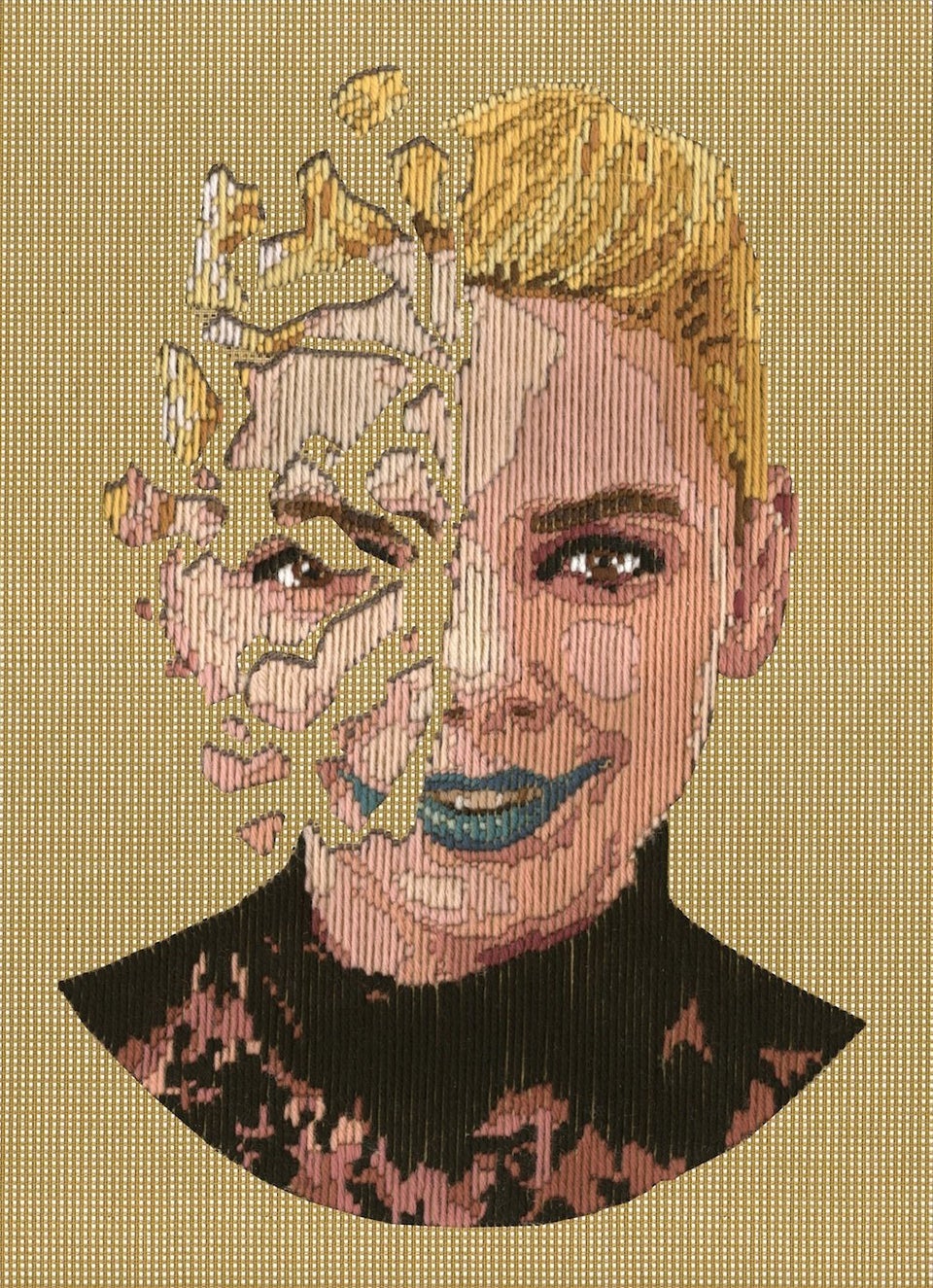Digital images are everywhere, and artists have reacted appropriately.
Some align themselves with the digital flood, giddily exploring all the glitches, pixels, zeros and ones that accompany it. Others choose to rebel against the supposed technological progress, working with elements that are natural, handmade or otherwise removed from the computer screen. Artist Catherine Tipping does a little of both.
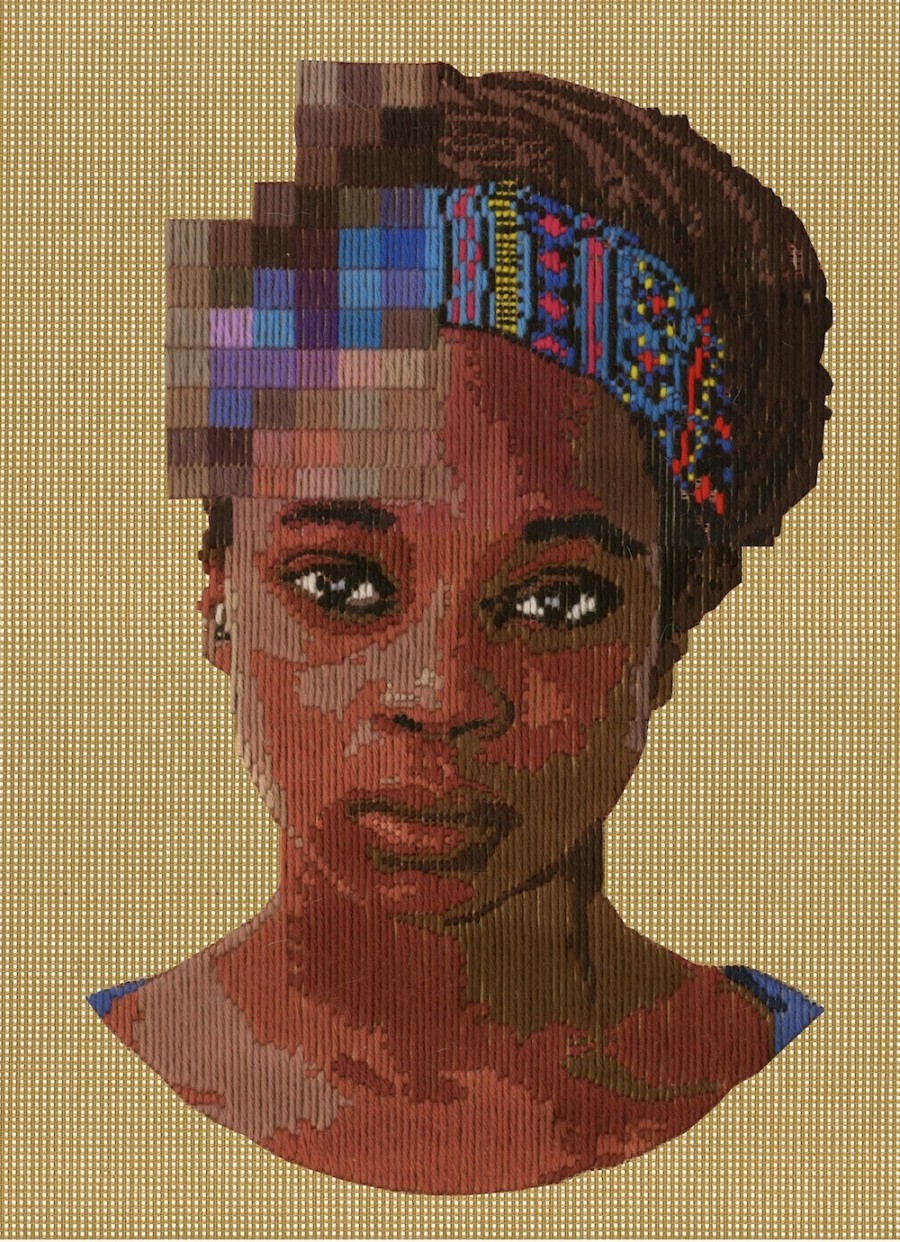
The Melbourne-based artist created a series of stunning stitched portraits titled "Filter," effectively blurring the line between the digital and the handmade. As her artist statement explains: "These works endeavored to create a tension between the labor intensive character of stitching wool and the complexities of digital image making." The series perfectly embodies contemporary questions of image-making, credibility and what it means to create art.
Tipping renders human faces that, in part, become pixelated, glitchy or otherwise obscured. The portraits are made from stitching wool, a difficult and time consuming process far removed from the instant gratification of digital imaging. Yet there are similarities between the stitch and the pixel -- both compact parts of a whole, mapped onto a larger grid.
"I was learning about Modernism and how technology changed society culturally back then," Tipping explained in an email to The Huffington Post. "I saw how the Digital era has had a similar affect on our culture. Now that we are in the second decade of the new millennium, we rely on the efficiency of digital technology. Recently, in some aspects of society, it appears there is a yearning for the handmade. Maybe now is the time when digital and handmade mediums can be combined and embraced by society. I see this bridge in my processes by using a digital image with all its pixels and hand stitching it."
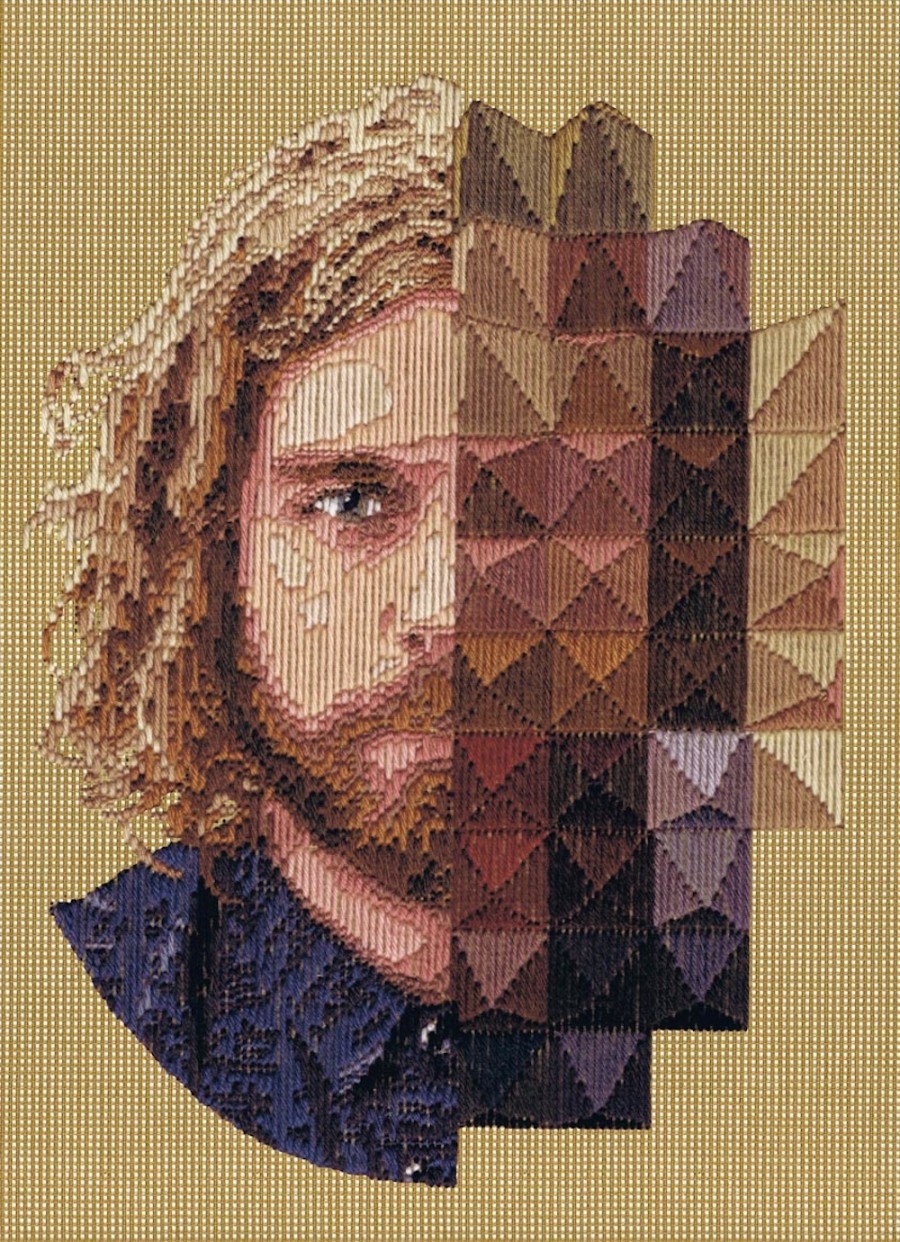
Tipping's images resemble both frozen computer screens and traditional embroideries, depending on your vantage point. The longer you look into the faces of her subjects, the more the disparities between pixel and stitch begin to fade away. Even the pixelated aspects of Tipping's portraits begin to take on natural characteristics, the glitchy breakdowns resembling the rings of tree trunks or ripples of water as much as computer breakdowns.
"The effect on each image is a Photoshop 'filter' I used from the time I made these," Tipping explained. "I am interested in cultural identity on many levels; societal, sub-cultural and personal. I like considering the distinctive visual traditions of different eras and outside factors that shape them. These portraits may appear distinctive of our current era or not, I sometimes wonder if we are becoming so anachronistic that we are indistinctive of a time."
Tipping complicates the potential implications of the world "filter" with her diverse range of subjects and their personal modes of self-expression. How, she asks, do we in the contemporary age place our own filters on ourselves when projecting our image to the outside world? What we wear, how we do our hair, the expression we choose when facing the camera -- is this all that different from adjusting one's skin tone in Photoshop?
It's a stunning project that incorporates many questions of living in the contemporary age, from being an artist to being oneself. Where does the human end and the technological begin? After looking at Tipping's dizzying stitch-happy depictions, we're fairly certain the line is more pixelated than we ever imagined. Take a look for yourself below.
